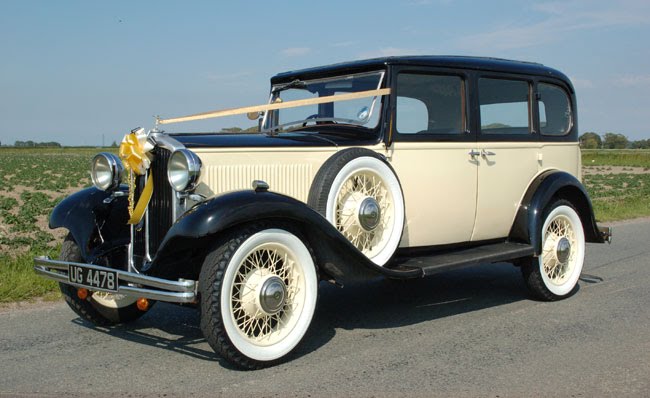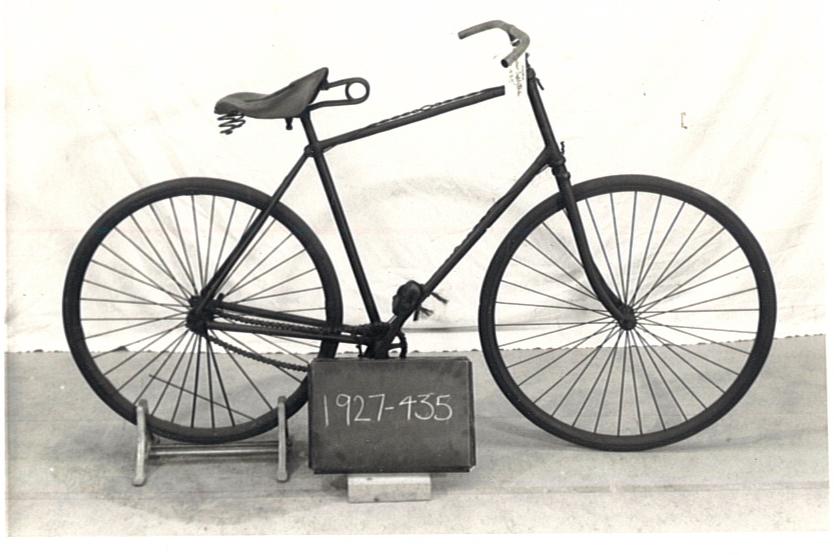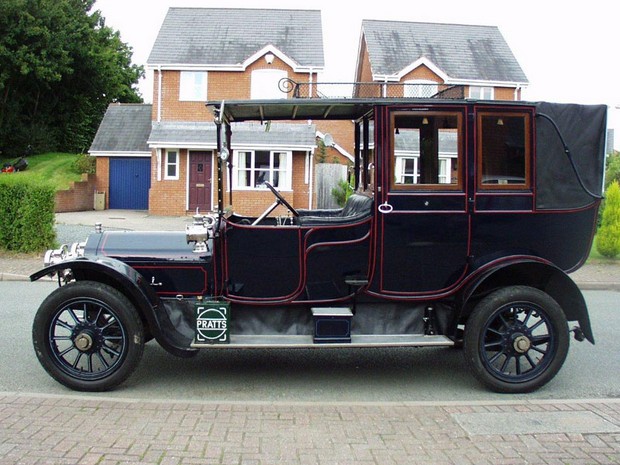|
Hillman 16
The Hillman 16 was a series of 16 horsepower (RAC rating) medium priced 5-seater executive cars made by Hillman during the 1930s by installing a smaller engine in their 20-horsepower Hillman 20 range. They were replaced by Hillman's 14 which changed its name between 1939 and 1945 to Humber Hawk. Hillman Wizard 65 Hillman 16 From 1934 Hillman made a pair of larger 6 cylinder side-valve saloon cars with two sizes of otherwise identical engines in identical bodies for the same price: this 16 horsepower car and a 20-horsepower version Hillman advertised the cars as having "Cushioned Power" mounts which helped stop vibration through the engine and gearbox and described their cars as being “built with a margin throughout”. These two models drew on some of the features and engine designs of the luxury Humber cars, including the Humber 12, 16/50, Snipe and Pullman, that were also being built under Rootes brothers control. This was an attempt by Hillman Ltd to enter the low end ... [...More Info...] [...Related Items...] OR: [Wikipedia] [Google] [Baidu] |
Hillman
Hillman was a British automobile marque created by the Hillman-Coatalen Company, founded in 1907, renamed the Hillman Motor Car Company in 1910. The company was based in Ryton-on-Dunsmore, near Coventry, England. Before 1907 the company had built bicycles. Newly under the control of the Rootes brothers, the Hillman company was acquired by Humber in 1928. Hillman was used as the small car marque of Humber Limited from 1931, but until 1937 Hillman did continue to sell large cars. The Rootes brothers reached a sixty per cent holding of Humber in 1932 which they retained until 1967, when Chrysler bought Rootes and bought out the other forty per cent of shareholders in Humber. The marque continued to be used under Chrysler until 1976. History Origins In 1857 Josiah Turner and James Starley formed the Coventry Sewing Machine Company, and recruited skilled engineers from the London area to join them, one of whom was William Hillman. In 1869 the firm changed its name to the Co ... [...More Info...] [...Related Items...] OR: [Wikipedia] [Google] [Baidu] |
Hillman 14
The Hillman Fourteen is a medium-sized 4-cylinder car announced by Hillman's managing director Spencer Wilks, a son-in-law of William Hillman, at the end of September 1925. This new Fourteen substantially increased Hillman's market share and remained on sale into 1931. During this time it was the main product of the company. Late 1920s fashion when engines and other mechanicals were firmly fixed to the chassis decreed that a medium-sized car like the Fourteen should be given a six-cylinder engine to reduce vibration. So the 2-litre Fourteen's place was taken by the 2.1-litre six-cylinder Hillman Wizard 65 in April 1931. This Wizard 65 was itself dropped in 1933. The 2.8-litre Wizard 75 continued (re-named 20/70) alongside a 2.6-litre Sixteen and a 3.2-litre Hawk, all of six cylinders. For four years Hillman had no offering in the 2-litre slot. The six-cylinder cars were not as successful as had been expected, and in October 1937 a new 2-litre four-cylinder Hillman Fourteen with ... [...More Info...] [...Related Items...] OR: [Wikipedia] [Google] [Baidu] |
Humber 16
The Humber is a large tidal estuary on the east coast of Northern England. It is formed at Trent Falls, Faxfleet, by the confluence of the tidal rivers Ouse and Trent. From there to the North Sea, it forms part of the boundary between the East Riding of Yorkshire on the north bank and North Lincolnshire on the south bank. Although the Humber is an estuary from the point at which it is formed, many maps show it as the River Humber. Below Trent Falls, the Humber passes the junction with the Market Weighton Canal on the north shore, the confluence of the River Ancholme on the south shore; between North Ferriby and South Ferriby and under the Humber Bridge; between Barton-upon-Humber on the south bank and Kingston upon Hull on the north bank (where the River Hull joins), then meets the North Sea between Cleethorpes on the Lincolnshire side and the long and thin headland of Spurn Head to the north. Ports on the Humber include the Port of Hull, the Port of Grimsby and the Port ... [...More Info...] [...Related Items...] OR: [Wikipedia] [Google] [Baidu] |
Hillman 20
The Hillman Wizard 75, Hillman Twenty 70, Hillman Hawk and their long wheelbase variants Hillman Seven Seater and Hillman 80 models were a series of 20 horsepower (RAC rating) medium priced 5-7 seater executive cars made by Hillman during the 1930s. Built at a time when body and chassis were quite separate structures Hillman's 20 horsepower chassis was given three different body shapes in five years and a grand total of five different names if the long wheelbase cars are included. The same body shapes and chassis were used for Hillman's 16 horsepower offering though that smaller engine was not offered with their long wheelbase cars. Towards the end of the 1930s the badges of the current models were changed by the Rootes brothers to Humber Snipe. Hillman Wizard 75 1931 a completely new Hillman "The Hillman Wizard, The car for the roads of the world" was designed by the Rootes brothers to capture new export markets and to continue their Super Snipe's challenge to "the American ... [...More Info...] [...Related Items...] OR: [Wikipedia] [Google] [Baidu] |
Humber Hawk
The Humber Hawk is a four-cylinder automobile manufactured from 1945 to 1967 by British-based Humber Limited. Humber Hawk Mk I & II The Hawk, a re-badged Hillman 14 (1938-1940) was the first Humber car to be launched after World War II. Slightly longer because of the new bootlid superimposed on its fastback tail and narrower having shed its running boards it also managed to be lighter than the prewar car. The engine, from the Hillman 14 but uprated almost ten percent to an output of 56 bhp, was shared with Sunbeam Talbot's 90s. It drove the Hawk's live rear axle through a four-speed gearbox with centrally located floor change. As with the Hillman the four-door body was mounted on a separate chassis and was of the six-light design (three windows on each side) with a sunshine roof as standard. Suspension was independent at the front using a transverse leaf spring, and at the rear the axle had half-elliptic springs. The Mark II version of September 1947 was not even a facel ... [...More Info...] [...Related Items...] OR: [Wikipedia] [Google] [Baidu] |
Humber Limited
Humber Limited was a British manufacturer of bicycles, motorcycles, and cars incorporated and listed on the stock exchange in 1887. It took the name "Humber & Co Limited" because of the high reputation of the products of one of the constituent businesses that had belonged to Thomas Humber. A financial reconstruction in 1899 transferred its business to Humber Limited. From an interest in motor vehicles beginning in 1896, the motor division became much more important than the cycle division and the cycle trade marks were sold to Raleigh in 1932. The motorcycles were withdrawn from sale during the depression of the 1930s. Humber is now a dormant marque for automobiles as well as cycles. Following their involvement in Humber through Hillman in 1928 the Rootes brothers acquired 60 per cent of Humber's ordinary capital, sufficient for a controlling interest. The two Rootes brothers joined the Humber board in 1932 and began to make Humber the holding company for vehicle manufacturing ... [...More Info...] [...Related Items...] OR: [Wikipedia] [Google] [Baidu] |
Tax Horsepower
The tax horsepower or taxable horsepower was an early system by which taxation rates for automobiles were reckoned in some European countries such as Britain, Belgium, Germany, France and Italy; some US states like Illinois charged license plate purchase and renewal fees for passenger automobiles based on taxable horsepower. The tax horsepower rating was computed not from actual engine power but by a mathematical formula based on cylinder dimensions. At the beginning of the twentieth century, tax power was reasonably close to real power; as the internal combustion engine developed, real power became larger than nominal taxable power by a factor of ten or more. Britain The so-called RAC horsepower rating was devised in 1910 by the RAC at the invitation of the British government. The formula is: : \frac where: : D is the diameter (or bore) of the cylinder in inches, : n is the number of cylinders The formula was calculated from total piston surface area (i.e., "bore" only). The fac ... [...More Info...] [...Related Items...] OR: [Wikipedia] [Google] [Baidu] |
Side Valve
A flathead engine, also known as a sidevalve engine''American Rodder'', 6/94, pp.45 & 93. or valve-in-block engine is an internal combustion engine with its poppet valves contained within the engine block, instead of in the cylinder head, as in an overhead valve engine. Flatheads were widely used internationally by automobile manufacturers from the late 1890s until the mid-1950s but were replaced by more efficient overhead valve and overhead camshaft engines. They are currently experiencing a revival in low-revving aero-engines such as the D-Motor. The side-valve design The valve gear comprises a camshaft sited low in the cylinder block which operates the poppet valves via tappets and short pushrods (or sometimes with no pushrods at all). The flathead system obviates the need for further valvetrain components such as lengthy pushrods, rocker arms, overhead valves or overhead camshafts. The sidevalves are typically adjacent, sited on one side of the cylinder(s), though some ... [...More Info...] [...Related Items...] OR: [Wikipedia] [Google] [Baidu] |
Straight-six Engine
The straight-six engine (also referred to as an inline-six engine; abbreviated I6 or L6) is a piston engine with six cylinders arranged in a straight line along the crankshaft. A straight-six engine has perfect primary and secondary engine balance, resulting in fewer vibrations than other designs of six or less cylinders. Until the mid-20th century, the straight-six layout was the most common design for engines with six cylinders. However, V6 engines became more common from the 1960s and by the 2000s most straight-six engines had been replaced by V6 engines. An exception to this trend is BMW which has produced automotive straight-six engines from 1933 to the present day. Characteristics In terms of packaging, straight-six engines are almost always narrower than a V6 engine or V8 engine, but longer than straight-four engines, V6s, and most V8s. Straight-six engines are typically produced in displacements ranging from , however engines ranging in size from the Benelli 750 ... [...More Info...] [...Related Items...] OR: [Wikipedia] [Google] [Baidu] |





.jpg)
